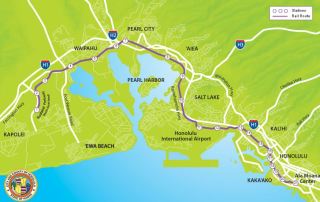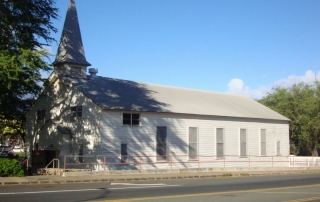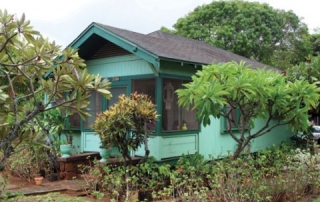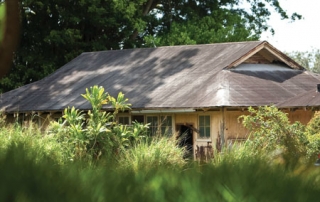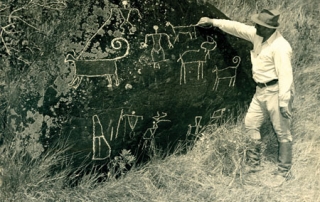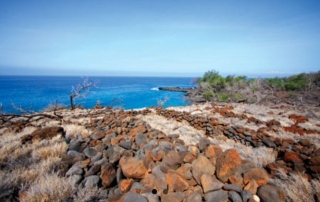The 33 Structures in the Path of Honolulu’s Rapid Transit Project (2009)
Photos: Courtesy of honolulutransit.org Article Written By: Jenny Quill, HONOLULU Magazine What is it? The 20-mile elevated rail line will connect West O‘ahu with downtown Honolulu and Ala Moana Center once it’s completed in 2019. The Historic Hawai‘i Foundation (HHF) has identified 33 historic sites between ‘Ewa and Kaka‘ako that will be impacted, with potential outcomes ranging from demolition to being transformed into a rail station. These sites include the Aloha Chapel, designed by renowned architect Vladimir Ossipoff; CINCPAC, the headquarters for the Commander in Chief, Pacific Command; and the Dillingham Transportation Building. What Threatens It? Given the scale of the project, Honolulu’s rail transit system will profoundly alter the face of the communities through which it passes. “Although the Historic Hawai‘i Foundation supports improved transportation options for Honolulu,” says executive director Kiersten Faulkner, “we remain concerned that the proposed system will have negative impacts on dozens of historic sites along the route. The adverse effects on over 30 historic properties, including at least three historic districts, will fundamentally change the cultural landscape of O‘ahu and forever diminish the civic experience in Honolulu’s historic areas.” In its defense, the Department of Transportation Services issued the following statement: “Various alternatives were considered before the selection was made of the currently proposed system and alignment. One of the considerations used in the evaluation of the alignments was impacts to environmental resources, such as historic resources.” What can be done? According to the DTS, “an agreement to minimize or mitigate the project’s adverse impact on the above historic resources is presently being developed.” Of the 33 identified historic sites, the rapid transit project will affect only the Afuso House, Higa Fourplex, Teixeira House, Lava Rock Curbs, Kapalama Canal [...]


